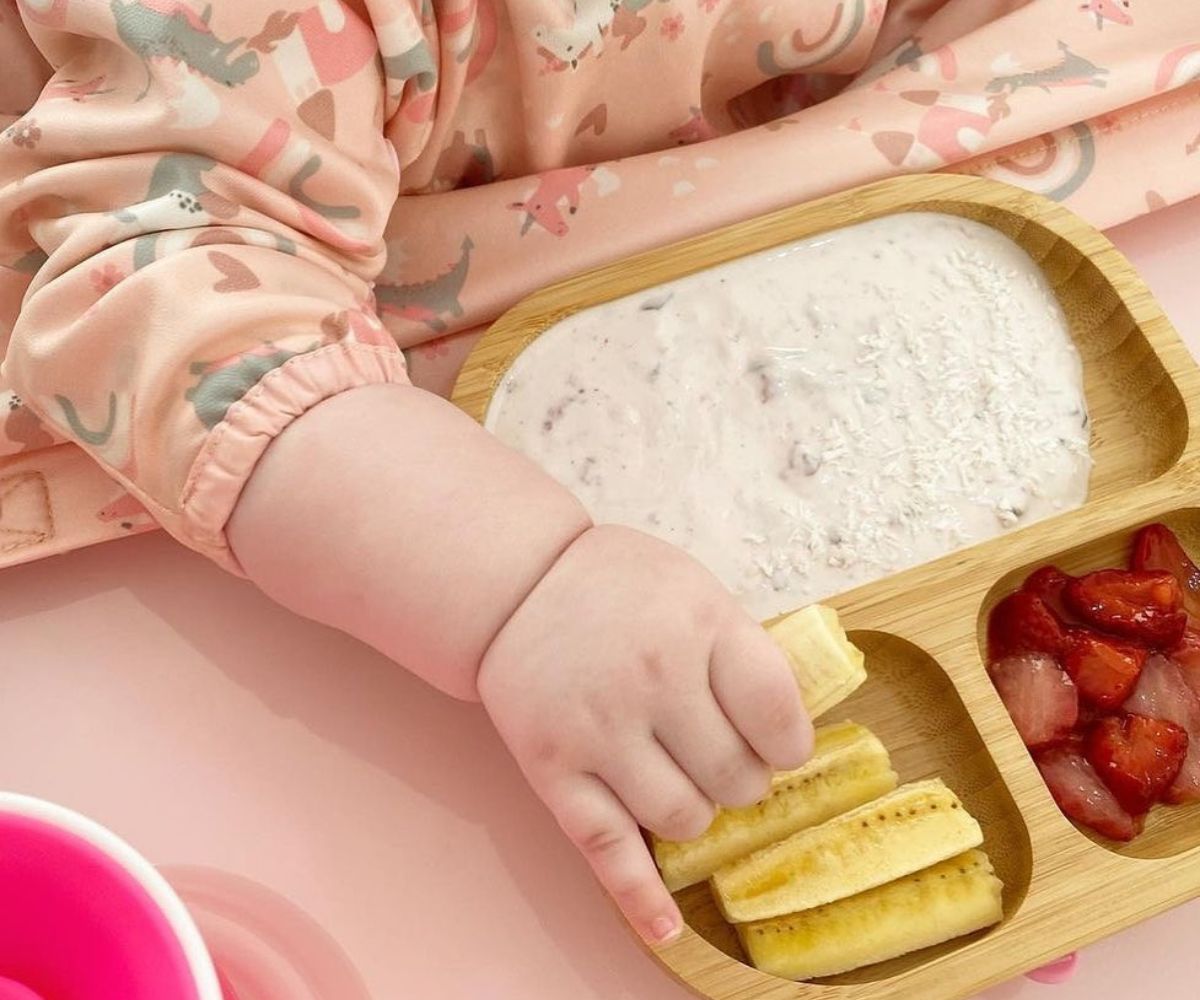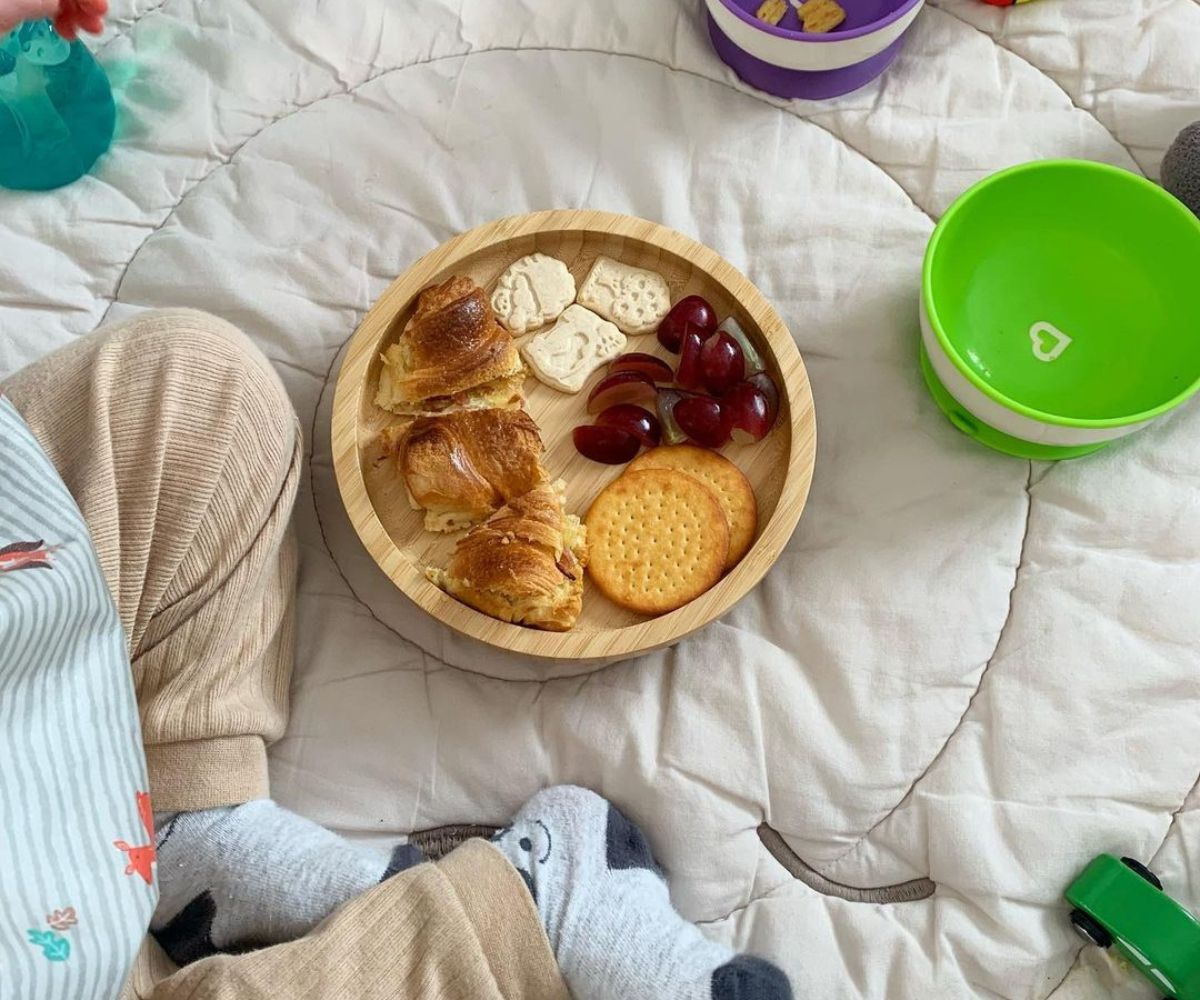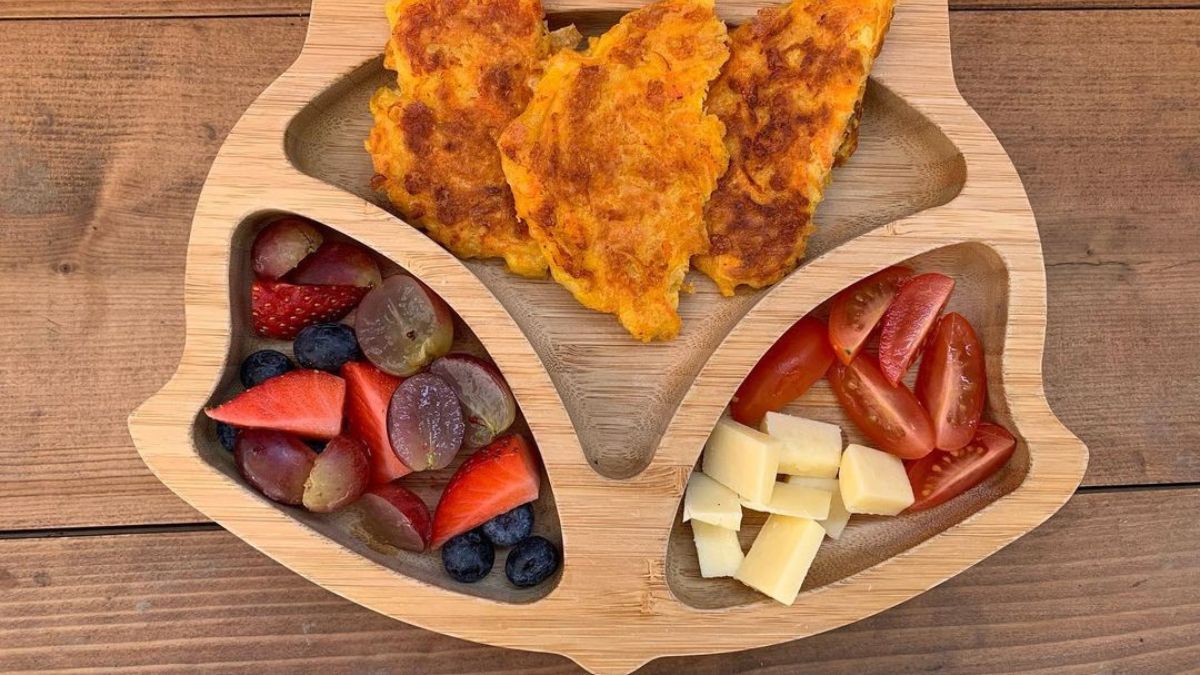There are a few key things to keep in mind when creating nutritious meals for toddlers. First, aim for variety and include foods from all the food groups. Second, focus on nutrient-dense foods that are packed with vitamins, minerals, and other nutrients.
And third, make sure meals are prepared in a way that is safe and easy for toddlers to eat. When it comes to specific foods, some good options for toddlers include whole-grain bread and cereals, fruits and vegetables, lean protein sources like chicken or fish, low-fat dairy products, and healthy fats like avocado or olive oil. Toddlers also need plenty of water throughout the day to stay hydrated.
If you’re unsure of what foods to give your toddler or how to prepare them, talk to your child’s pediatrician for guidance.
As a parent, you want to do everything you can to ensure your child is healthy and happy. One of the best ways to do this is to instill healthy eating habits early on. By teaching your toddler how to make nutritious choices, you’re setting them up for a lifetime of good health.
Here are some tips for creating healthy meals for your toddler:
1. Include a variety of fruits and vegetables. Toddlers need at least 3-5 servings of fruits and vegetables per day. So, make sure to include plenty of these in their diet. A great way to do this is by offering a fruit or vegetable at every meal.
2. Incorporate whole grains. Whole grains are an important part of a healthy diet, so try to include them at every meal as well. Offer whole grain bread, pasta, cereals, and crackers as snacks and side dishes.
3. Limit sugary drinks and snacks. It’s important to limit the amount of sugar your toddler consumes each day. Too much sugar can lead to weight gain and cavities. Stick with water or milk as drinks and offer fresh fruits or veggies as snacks instead of cookies or cake.
 What are Some Ways to Develop Healthy Eating Habits for Your Toddler?
What are Some Ways to Develop Healthy Eating Habits for Your Toddler?
When it comes to developing healthy eating habits for your toddler, there are a few things you can do to help encourage them to eat healthy foods. One way is to lead by example and eat healthy foods yourself. This will show your toddler that you think healthy foods are important and can be delicious too!
Another way is to make sure the majority of the food options available to your toddler are healthy ones. If they see unhealthy snacks and sweets all around, it will be harder for them to develop a taste for healthier fare. Finally, try not to use food as a reward or punishment for your toddler.
This can create an unhealthy association with certain foods and may lead to issues with food later on in life. Praise them when they eat well and offer non-food rewards instead of sugary treats when they accomplish something great.
Why Healthy Eating Habits are Important for Toddlers?
A healthy diet is important for many reasons. It can help you maintain a healthy weight, have more energy, and avoid diseases and health conditions. Toddlers need plenty of nutrients to grow and develop properly.
A nutritious diet helps them build strong bones and muscles, helps their bodies fight infections, and helps with brain development. Toddlers are growing rapidly and need more calories than adults. They also need specific amounts of vitamins, minerals, and other nutrients to support their growth.
For example, toddlers need more iron than adults because they’re building up their iron stores for the future. They also need more calcium to support their growing bones. A healthy diet for a toddler includes:
-Plenty of fruits, vegetables, and whole grains which provide essential vitamins, minerals, fiber, and antioxidants.
-Protein from lean meats, poultry, fish, legumes (beans), or eggs which help build and repair tissues.
-Dairy products such as milk or yogurt contain calcium for strong bones.
-Healthy fats from olive oil, nuts, or avocado which are important for growth.
-Water to prevent dehydration and unhealthy eating habits in childhood can lead to obesity later in life so it’s important to encourage healthy eating habits from an early age.
How Do You Promote Healthy Eating Habits in Childcare?
There are many ways to promote healthy eating habits in childcare. One way is to provide nutritious meals and snacks that are appealing to children. Another way is to teach children about the importance of good nutrition and how to make healthy food choices.
One way to promote healthy eating habits in childcare is to provide nutritious meals and snacks that are appealing to children. It is important to offer a variety of foods from all the food groups, including fruits, vegetables, whole grains, lean proteins, and low-fat dairy. It is also important to limit processed foods, sugary drinks, and unhealthy fats.
By providing nutritious and tasty foods, you can encourage children to eat well and develop healthy eating habits for life. Another way to promote healthy eating habits in childcare is to teach children about the importance of good nutrition and how they can make healthy food choices. Children need age-appropriate information about the nutrients their bodies need and where they can find them in various foods.
They also need guidance on making wise food choices based on their individual needs and preferences. When kids understand why it’s important to eat certain foods and how those foods benefit their bodies, they’re more likely to make healthier choices on their own.
 Five Good Eating Habits for Child
Five Good Eating Habits for Child
It’s important for children to develop healthy eating habits at a young age to ensure proper growth and development, as well as to establish a foundation for a lifetime of healthy eating. Here are five good eating habits that parents can encourage their children to adopt:
- Eat a variety of foods: Encourage children to eat a variety of foods from all food groups, including fruits, vegetables, whole grains, lean protein, and low-fat dairy. This ensures that children get all the nutrients their bodies need for growth and development.
- Limit processed foods and added sugars: Processed foods and foods high in added sugars can be high in calories and low in nutrients. Encourage children to limit their intake of these foods and instead choose whole, minimally processed foods.
- Eat breakfast every day: Breakfast is an important meal that helps jumpstart metabolism and provides energy for the day. Encourage children to eat a healthy breakfast every day, such as oatmeal with fruit or a whole-grain waffle with peanut butter.
- Practice portion control: Children should be taught to listen to their bodies and eat until they feel full, but not stuffed. Encourage children to use smaller plates and bowls, and to take small servings of food to start with. This helps prevent overeating and promotes a healthy weight.
- Sit down to eat: Encourage children to sit down at a table and focus on their meals when they eat. This helps prevent mindless snacking and promotes mindful eating, which can lead to better digestion and a greater appreciation for food.
Strategies to Encourage Healthy Eating in Child Care
Encouraging healthy eating habits in childcare settings is important for promoting the health and well-being of young children. Here are some strategies that childcare providers can use to promote healthy eating habits in children:
- Provide a variety of healthy foods: Offer a variety of healthy foods from all food groups, including fruits, vegetables, whole grains, lean protein, and low-fat dairy. This ensures that children are getting all the nutrients their growing bodies need.
- Make food appealing: Make healthy foods appealing to children by using creative and fun presentations, such as arranging fruits and veggies into fun shapes or colors. Let children participate in food preparation and provide sensory experiences, such as smelling herbs or touching different textures of food.
- Create a positive eating environment: Encourage children to eat together in a relaxed and positive environment. Remove distractions such as toys or screens, so that children can focus on their meals and enjoy the social experience of eating together.
- Set a good example: Childcare providers should model healthy eating habits by eating healthy foods themselves and discussing the importance of healthy eating with children. This can help children develop positive attitudes toward healthy eating.
- Educate children: Teach children about the importance of healthy eating and the benefits of eating different types of food. Use simple language, visuals, and activities to help them understand and retain the information.
- Encourage family involvement: Provide information to families about healthy eating habits and involve them in creating healthy menus for their children. Encourage families to model healthy eating habits at home.
- Limit unhealthy foods: Limit foods and drinks that are high in sugar, salt, or unhealthy fats. Avoid serving sugary drinks like sodas, and instead, provide milk or water as the main drinks.
By implementing these strategies, childcare providers can help children develop healthy eating habits that will benefit them throughout their lives.
 How to Encourage Child to Eat Healthily
How to Encourage Child to Eat Healthily
It can be tough to get kids to eat healthily. They often want nothing to do with fruits and vegetables, and would rather fill up on unhealthy junk food. As a parent, it’s your job to encourage them to eat healthily so that they can grow up strong and healthy.
Here are some tips on how to encourage your child to eat healthily:
Set a good example. If you want your child to eat healthy, you must set an example yourself. Eat plenty of fruits and vegetables at meals, and avoid processed junk food as much as possible. Your child will take their cue from you, so ensure you’re setting a good example!
Make it fun. Kids often don’t want to eat fruits and vegetables because they seem boring compared to junk food. To make them more appealing, try adding dips or dressings, or serving them in fun shapes with toothpicks through them. You can also let your child choose their own produce at the grocery store – they’ll be more likely to eat it if they had a hand in picking it out!+
Get them involved in cooking. Kids love helping out in the kitchen, so put them to work when you’re making dinner! Let them wash the veggies, stir the pot, or add ingredients into the mix. They’ll be more likely to eat what they helped prepare – plus, it’s a great way for quality family time together.
Be patient and persistent. It may take some time for your child to develop a taste for healthier foods, so don’t give up if they don’t like something right away.
Keep offering new foods, and eventually, they’ll find something they enjoy. And even if they never become big fans of fruits and vegetables, as long as they eat some, that’s still progress!
How to Get a Child to Eat When They Refuse
When your child refuses to eat, it can be a frustrating experience. You may feel like you’ve tried everything, but sometimes all it takes is a little patience and creativity. Here are some tips to help you get your child to eat when they refuse:
Try a different approach. If your child has been refusing meals, try changing up your approach. Instead of serving them the same food day after day, mix things up and give them something new to try. This could be as simple as adding some new fruits or vegetables to their plate or trying a new recipe.
Be patient. It can be tempting to force your child to eat when they’re being stubborn, but this will only make the situation worse. Instead, be patient and offer encouragement. Let them know that you’re there for them and eventually they’ll come around and start eating again.
Get creative with meals. If your child is really refusing to eat, get creative with their meals. There are plenty of healthy recipes out there that are both delicious and nutritious. Sometimes all it takes is finding the right one to finally get your child to take a bite!
 Teaching Healthy Eating to Preschoolers
Teaching Healthy Eating to Preschoolers
The Centers for Disease Control and Prevention report that one in three children in the United States is overweight or obese. This is an alarming statistic, considering the many health risks that are associated with being overweight or obese, such as type 2 diabetes, heart disease, and stroke. There are many things that parents can do to help their children develop healthy eating habits.
One of the most important things is to lead by example. If you want your child to eat more fruits and vegetables, then make sure you’re eating them yourself! It’s also important to involve your child in meal planning and preparation whenever possible.
Let them help you choose recipes, wash produce, and even cook alongside you. When it comes to actually teaching kids about healthy eating habits, there are a few key points to keep in mind. First of all, keep it simple.
Preschoolers have short attention spans so they’re not going to be able to sit through a long lecture on nutrition. Instead, focus on one healthy eating habit at a time and make it into a game or activity that they can enjoy. For example, you could turn choosing different fruits and vegetables into a fun guessing game at the grocery store or challenge them to see how many different colors of foods they can eat in one day.
It’s also important to be patient when teaching healthy eating habits since it will likely take some time for these new behaviors to become ingrained. Praise your child regularly for making good choices and don’t worry if they occasionally slip up – we all do! Just keep modeling those healthy habits yourself and eventually, they’ll catch on.
Conclusion
It can be difficult to get toddlers to eat healthy foods, but it is important to start them off on the right foot. Creating nutritious meals for toddlers can be simple if you follow a few basic guidelines. Make sure to include a variety of food groups in their diet, offer small portions, and avoid sugary snacks and drinks.
With a little effort, you can help your toddler develop healthy eating habits that will last a lifetime.




